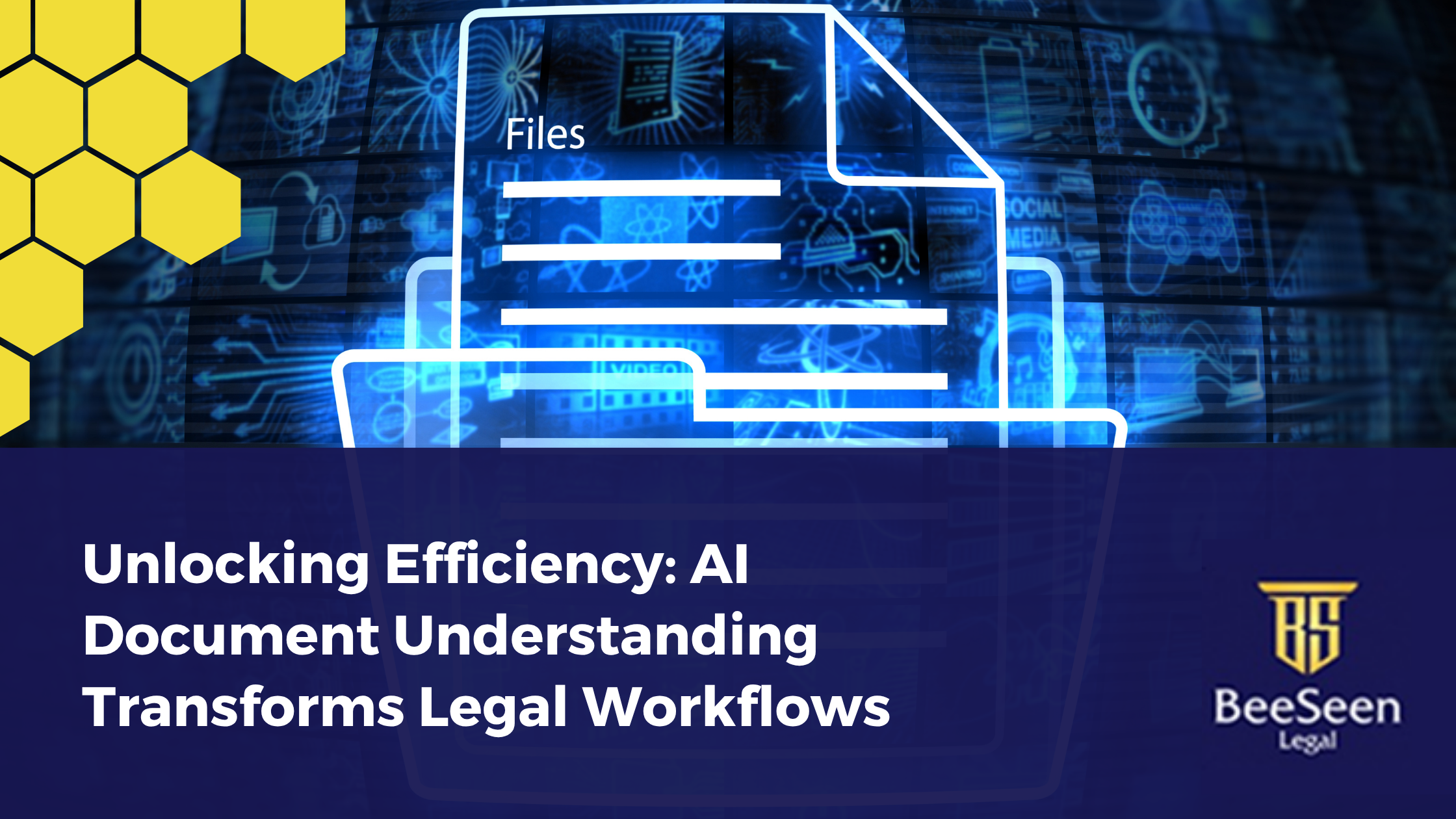In today’s fast-paced legal environment, efficiency is crucial. Legal teams are often overwhelmed with contracts, documents, and briefs that require detailed analysis. Fortunately, AI Document Understanding is changing the way legal professionals manage their workload. This cutting-edge technology doesn’t just streamline tasks—it revolutionizes legal operations.
Understanding the Challenge
Legal work creates an overwhelming amount of paperwork. This includes contracts, court filings, legal opinions, and precedents. Traditionally, legal professionals reviewed these documents by hand. This method was slow and often resulted in errors.
However, AI Document Understanding now offers a smarter, faster, and more accurate way to handle this information at scale.
How AI Document Understanding Works
At its core, AI Document Understanding uses machine learning and natural language processing (NLP) to analyze legal text. It breaks down documents, identifies key data, and understands context. Here’s a quick overview of the process:
1. Data Ingestion
The system first pulls in large volumes of legal documents. This includes contracts, regulations, case law, and more.
2. Pre-processing
Next, the AI prepares the text. It standardizes terms and divides documents into logical sections for easier analysis.
3. Entity Recognition
The system highlights important information. It identifies names, dates, organizations, and other critical data.
4. Contextual Understanding
AI understands how the information is used in context. This is essential for interpreting legal nuances.
5. Information Extraction
Finally, the system extracts relevant insights. This could include clauses, summaries, legal risks, or case references.
Accelerating Due Diligence
Due diligence is a time-consuming but essential part of many legal processes, especially mergers and acquisitions. AI can analyze thousands of pages in minutes. It also flags key clauses related to indemnity, compliance, or termination.
As a result, legal teams can make better decisions, faster—and with less risk of oversight.
Smarter Contract Review and Management
Contracts are fundamental in law, but managing them manually is tedious. AI helps by:
Identifying terms, conditions, and obligations.
Tracking deadlines and compliance triggers.
Recommending edits based on predefined legal criteria.
This allows legal professionals to shift their focus from manual reviews to strategic analysis.
Legal Research Reimagined
Legal research often requires sifting through thousands of pages of case law, statutes, and precedents. AI Document Understanding makes this process more efficient. It helps by:
Finding relevant cases
Extracting legal principles
Summarizing rulings and opinions
This not only saves time but also helps build stronger legal arguments.
Enhancing Regulatory Compliance
Staying compliant with ever-evolving regulations is a constant challenge for legal teams, especially in industries with stringent regulatory frameworks. AI Document Understanding plays a pivotal role in enhancing regulatory compliance by automating the monitoring and analysis of regulatory changes.
The technology can analyze regulatory updates, extract relevant information, and alert legal teams to changes that may impact their clients or organizations. This proactive approach not only ensures timely compliance but also allows legal professionals to stay ahead of regulatory developments.
Overcoming Language Barriers
In an increasingly globalized legal landscape, dealing with documents in multiple languages is not uncommon. AI Document Understanding’s language-agnostic capabilities are instrumental in overcoming language barriers. The technology can analyze and understand content in different languages, providing a seamless solution for legal teams working on international cases or transactions.
This language versatility not only expands the reach of legal services but also ensures accurate and consistent document analysis across diverse linguistic contexts.
Addressing Security and Confidentiality Concerns
Legal documents often contain sensitive and confidential information, making security a top priority for legal teams. AI Document Understanding systems are designed with robust security measures to safeguard sensitive data.
Encryption, access controls, and audit trails are integral components of AI Document Understanding platforms, ensuring that legal professionals can trust the technology to handle confidential information securely. This addresses one of the primary concerns associated with adopting AI solutions in the legal sector.
The Human Touch: Augmenting, Not Replacing
While AI Document Understanding is undeniably transformative, it’s essential to recognize that it complements human expertise rather than replacing it. Legal professionals bring nuanced insights, legal judgment, and contextual understanding that AI, as of now, cannot fully replicate.
AI Document Understanding should be viewed as a powerful tool that enhances the capabilities of legal teams, allowing them to focus on high-value tasks that require human intuition and creativity. Technology’s ability to handle repetitive, time-consuming tasks liberates legal professionals to dedicate more time to strategic thinking, client interactions, and complex legal analysis.
Considerations for Implementation
Like any major technology investment, implementing AI Document Understanding comes with a few important considerations:
1. Training and Integration
You’ll need to train the system using legal-specific content. It must also integrate smoothly with your existing tools.
2. Ethics and Bias
AI can reflect biases present in its training data. Always evaluate the ethical implications and ensure proper oversight.
3. Ongoing Updates
Laws and regulations evolve. Your AI system should be updated regularly to reflect legal changes.
4. Cost
Initial costs can be high, but the long-term savings and efficiency gains often outweigh the investment.
The Future of Legal Work
As AI Document Understanding continues to evolve, its impact on legal workflows is poised to grow exponentially. The future promises even more sophisticated capabilities, including enhanced contextual understanding, improved language support, and seamless integration with other legal technologies.
Legal professionals embracing AI Document Understanding today are positioning themselves at the forefront of a transformative wave in the legal industry.
Partner with BeeSeen Legal for Smarter Legal Operations
BeeSeen Legal is a Legal Process Outsourcing (LPO) provider offering real attorneys who support full paralegal functions—at a fraction of the cost. We develop customized strategies to help law firms and legal departments boost revenue, reduce expenses, and scale efficiently. Learn more about our free trial offering: Visit beeseenlegal.com or call us at 631-400-4234.
Key Points

